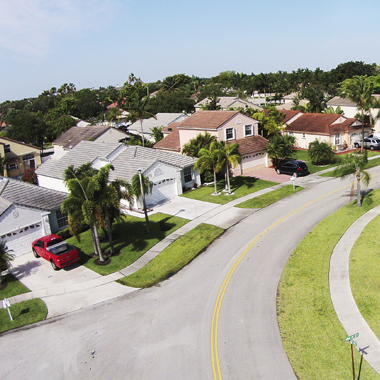
Housing affordability in the United States has been a widely discussed topic since the end of the Great Recession. Driven in part by rising costs associated with high demand, and in part by slow or stagnant wage growth, the need to develop affordable housing options is quickly becoming a higher priority for many communities. Our research snapshot highlights four key findings on housing affordability impacting local governments across the country.
1. More than one in three American households are housing cost-burdened.
In 2014, about 35% of American households were housing cost-burdened, spending more than 30% of household income on housing. Among renters in particular, almost half of all households were housing cost-burdened (Source: U.S. Census Bureau).
2. Housing affordability is increasingly cited among local leaders as a barrier to economic development.
The lack of affordable housing options can impact not only a community’s quality of life, but also its ability to grow, attract, and retain businesses. The proportion of local governments identifying housing affordability as an economic development barrier has more than doubled since 2009. About 14.1% of local governments responding to ICMA’s 2009 Economic Development Survey indicated that high housing costs represented a barrier to economic development. A follow-up survey conducted in 2014 revealed that 30.6% of responding governments saw high housing costs as either a “medium” or “high” barrier to economic development.
3. Local governments fund a large proportion of housing affordability programs.
Understanding the impact that housing affordability can have on the economy as well as on a community’s quality of life, local leaders have been pursuing a variety of initiatives to expand housing options for residents of all income levels. While the federal and state governments continue to be the primary source of funding for housing affordability initiatives, local governments are also making significant investments. ICMA’s recently released 2015 Survey of Local Government Sustainability Practices found that among communities with a housing affordability program, 41.2% of these programs were supported by local government funding.
4. Communities of all sizes and in all regions are economically impacted by housing affordability challenges.
While densely populated metropolitan areas, such as Los Angeles, San Francisco, Washington, DC, and New York City, receive much national attention for their high housing costs, ICMA’s survey results demonstrate that communities of all sizes and in all regions of the country are economically impacted by a lack of affordable housing. In many smaller communities, demand may not be driving higher housing costs, but residents may be housing cost-burdened nonetheless because of low income levels.
New, Reduced Membership Dues
A new, reduced dues rate is available for CAOs/ACAOs, along with additional discounts for those in smaller communities, has been implemented. Learn more and be sure to join or renew today!
